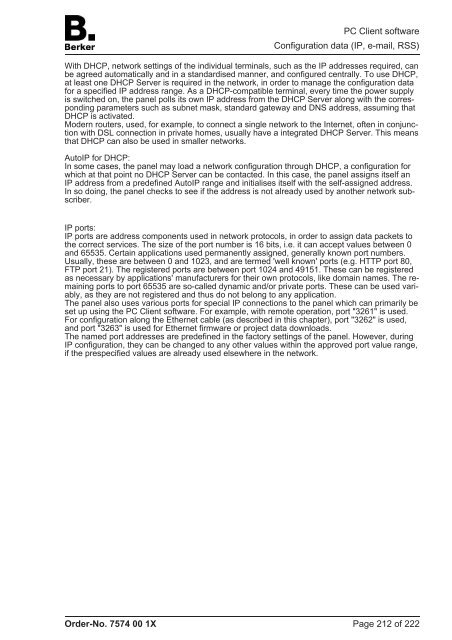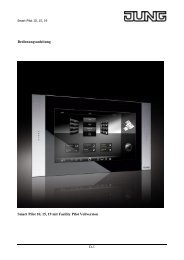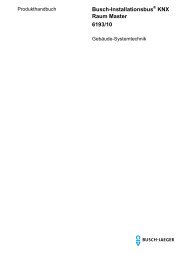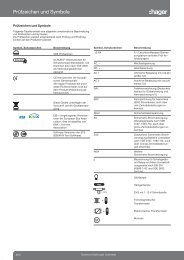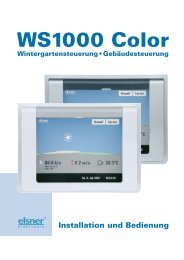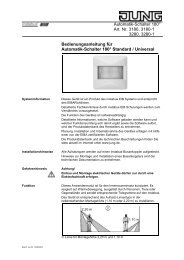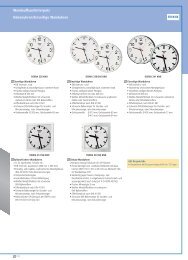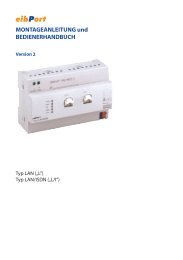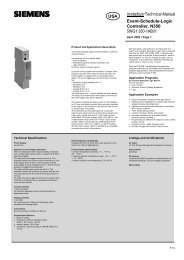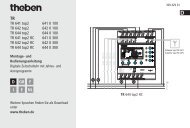You also want an ePaper? Increase the reach of your titles
YUMPU automatically turns print PDFs into web optimized ePapers that Google loves.
With DHCP, network settings of the individual terminals, such as the IP addresses required, can<br />
be agreed automatically and in a standardised manner, and configured centrally. To use DHCP,<br />
at least one DHCP Server is required in the network, in order to manage the configuration data<br />
for a specified IP address range. As a DHCP-compatible terminal, every time the power supply<br />
is switched on, the panel polls its own IP address from the DHCP Server along with the corresponding<br />
parameters such as subnet mask, standard gateway and DNS address, assuming that<br />
DHCP is activated.<br />
Modern routers, used, for example, to connect a single network to the Internet, often in conjunction<br />
with DSL connection in private homes, usually have a integrated DHCP Server. This means<br />
that DHCP can also be used in smaller networks.<br />
AutoIP for DHCP:<br />
In some cases, the panel may load a network configuration through DHCP, a configuration for<br />
which at that point no DHCP Server can be contacted. In this case, the panel assigns itself an<br />
IP address from a predefined AutoIP range and initialises itself with the self-assigned address.<br />
In so doing, the panel checks to see if the address is not already used by another network subscriber.<br />
IP ports:<br />
IP ports are address components used in network protocols, in order to assign data packets to<br />
the correct services. The size of the port number is 16 bits, i.e. it can accept values between 0<br />
and 65535. Certain applications used permanently assigned, generally known port numbers.<br />
Usually, these are between 0 and 1023, and are termed 'well known' ports (e.g. HTTP port 80,<br />
FTP port 21). The registered ports are between port 1024 and 49151. These can be registered<br />
as necessary by applications' manufacturers for their own protocols, like domain names. The remaining<br />
ports to port 65535 are so-called dynamic and/or private ports. These can be used variably,<br />
as they are not registered and thus do not belong to any application.<br />
The panel also uses various ports for special IP connections to the panel which can primarily be<br />
set up using the PC Client software. For example, with remote operation, port "3261" is used.<br />
For configuration along the Ethernet cable (as described in this chapter), port "3262" is used,<br />
and port "3263" is used for Ethernet firmware or project data downloads.<br />
The named port addresses are predefined in the factory settings of the panel. However, during<br />
IP configuration, they can be changed to any other values within the approved port value range,<br />
if the prespecified values are already used elsewhere in the network.<br />
Order-No. 7574 00 1X<br />
PC Client software<br />
Configuration data (IP, e-mail, RSS)<br />
Page 212 of 222


